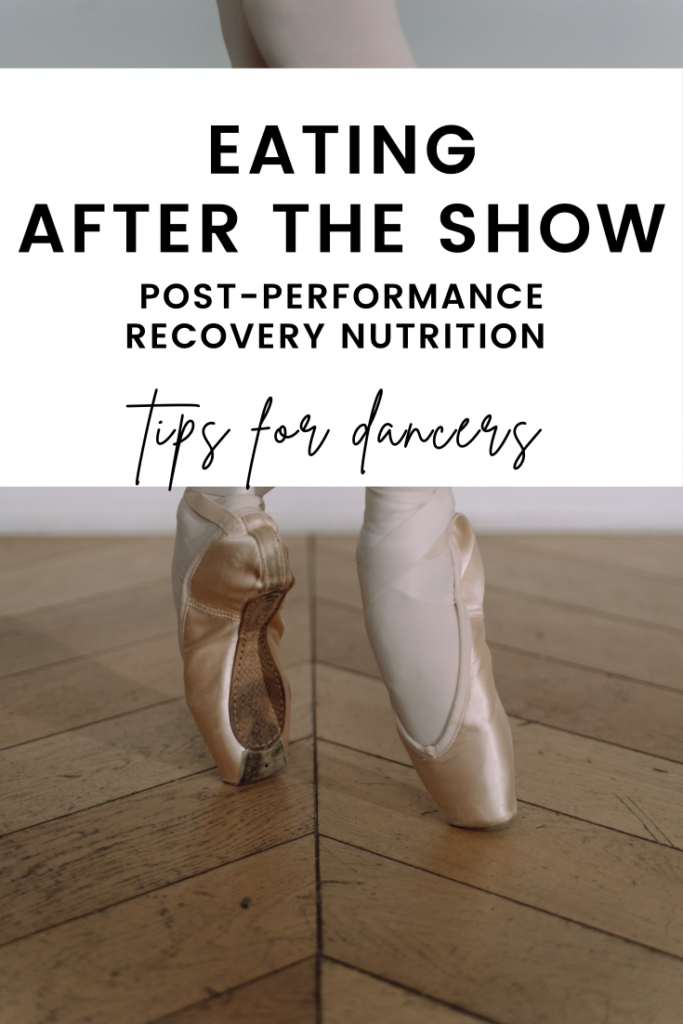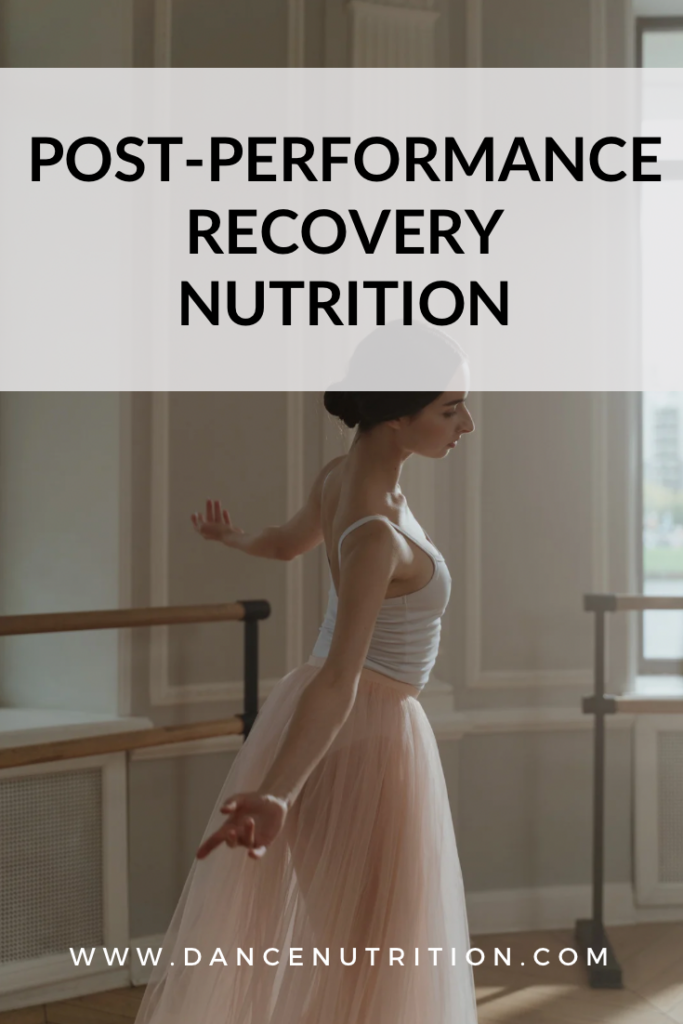Generalized recovery efforts to support your day-to-day dancing are important. But this type of recovery is not necessarily geared towards injury recovery (in fact, I’ve previously written on that topic here). Instead, we’re focusing on post-performance recovery.
Similar to how pre-performance meal planning supports your energy, post-performance recovery nutrition supports the longevity of your dancing. In fact, chronic fatigue, excessive soreness, and the inability to focus can all be linked to subpar recovery efforts. Performance recovery is a topic I discuss at length with the dancers in The Healthy Dancer® and you can start implementing these strategies today. In this article, we’ll uncover the key steps that dancers can take to promote post-performance recovery.
A post-performance nutrition plan precursors injury prevention
For many dancers, time constraints and travel logistics pose significant barriers to their recovery nutrition efforts. Before we learn how to intervene after dancing, let’s first consider a nutrition self-assessment to identify potential obstacles:
- Am I supporting my pre-performance efforts with adequate meals and snacks?
- Can I take advantage of the recovery window within the hour after intense dancing?
- Does my recovery nutrition plan incorporate foods rich in protein and if so, does it include the specific proteins known to optimize muscle recovery?
- Does my recovery nutrition plan incorporate foods rich in carbohydrates and if so, does it include the specific carbohydrates known to optimize muscle recovery?
- Am I including a form of fluid and electrolyte replenishment after dancing?
Once you’ve identified potential challenge points, consider these starting points:
Lock in a solid pre-performance nutrition plan
A pre-performance nutrition plan sets the stage for your recovery. As discussed in this article, setting forth flexible meals and snacks throughout your day will help to support calorie needs and adequate nourishment. Because dancer diet culture often underestimates and dancer’s nutritional needs, it can be challenging to identify an amount of food that works for your body— working with a Registered Dietitian Nutritionist is encouraged if you’re struggling.
How can I optimize my post-performance recovery window?
Researchers have long believed that a post-performance “anabolic” (growth) window occurs during the hour after intense exercise. This post-performance recovery window is often emphasized on nutrition plans with a protein-rich meal or snack within that hour. But this 60-minute window has since been disputed, with some suggesting an “anabolic” (growth) window to last for up to 5-6 hours after exercise. Regardless, there’s no debate that a meal and/or snack at some point after dancing will replenish your body with the much-needed nutrients to support recovery.
Recovery nutrition basics
A natural increase in insulin sensitivity after intense movement prepares the body for the absorption of carbohydrates— an essential nutrient that replenishes muscle glycogen. As mentioned here, muscle glycogen supports your body’s energy both before and after dancing. Adding carbohydrate-rich foods to your recovery meal or snack is therefore critical.
Along with carbohydrates is an overall increase in Muscle Protein Synthesis (MPS)— stimulated by the amino acid content of a protein-rich meal or snack. There is some evidence to suggest a benefit from branched-chain amino acids— these include three specific amino acids (leucine, isoleucine, and valine). BCAAs are often pushed alongside protein supplements, however, supplements are largely unregulated so a food-first approach is encouraged. Here are some options rich in these essential amino acids:
- Chicken, eggs
- Fish
- Dairy
- Tofu
- Hemp seeds
- Quinoa
- Red lentils
- Peanuts
If post-performance meal timing and/or travel makes it challenging to get in a meal or snack, then consider a protein- and carbohydrate-rich bar or shake to bridge you until your next full meal or snack is accessible.
What is my hydration plan?
One of the most overlooked parts of a dancer’s post-performance recovery nutrition plan is hydration. Consistent and proactive hydration efforts will help to flush the natural buildup of lactic acid that occurs during intense exercise. This involves a unique mix of fluids and electrolytes— here’s more on how to maximize your hydration efforts.
Rehydration is another helpful technique, especially during the hot and humid summer months. Here’s another article that dives deeper into the various rehydration therapies that can support dancers.
How can dancers reduce muscle soreness?
First, I want to stress that there is no magic food or drink to eradicate muscle soreness. This is contrary to what you might see and hear— supplements that are specifically geared to athletes (and dancers) often utilize the notion of alleviating muscle soreness as a ploy to market their products. It’s even more imperative that dancers understand the realities of consistent muscle soreness, which can be a sign of over-training. Consulting with a licensed physical therapist is encouraged to help support this experience, along with a re-evaluation of your non-nutrition recovery plan (are you planning for multiple rest days in your week?).

As mentioned above, rehydration therapies will help in the removal of lactic acid. In regard to food, there are a handful of nutrients that we can include in our daily meals and snacks that can support anti-inflammation and reduce muscle soreness:
- Omega-3 fatty acids, specifically EHA and DHA hold anti-inflammatory benefits. Food sources like fatty fish, nuts, and seeds are also rich in protein, which is key for repairing muscle tissue and reducing muscle breakdown.
- Leafy greens like spinach, kale, and arugula are packed with a variety of vitamins that support anabolism and reduce inflammation, including magnesium, vitamin A, vitamin C, vitamin K, folic acid, iron, and calcium.
- Cherries are rich in anthocyanins and antioxidants which help reduce oxidative stress— a natural response to extreme exercise.
- Turmeric is known for its powerful anti-inflammatory properties that might help to alleviate swelling and soreness.




